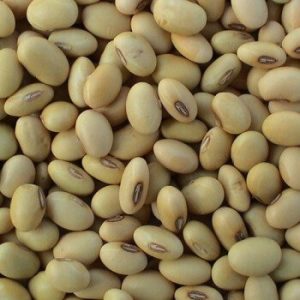1) What are soya beans?
Known as soy in the US, soya beans are in the pea/bean family. They’re the largest global protein crop and the most efficient source of protein per hectare. Soya beans are used to make a variety of vegetarian food such as tofu, miso, edamame, tempeh and soy milk. The vast majority of the soya bean crops are crushed, which results in soybean oil and soya flour.
Soya is also used to enrich the protein level in other foods. In fact, most commercially produced beef, fish, chicken, egg and dairy products contain soya, according to the World Wildlife Foundation (WWF). Europeans consume an average of 61 kilograms of soy per year, the WWF says. Still, soymeal is primarily used for animal feed, and 80% of the world’s soybean crop is fed to livestock.
In summary, soya is crucial for food security and relevant for various economic sectors, including animal feed, dairy, oils and fats, food and groceries. The urbanisation and growth in consumption of meat, dairy and eggs over the past years has underpinned the increase of soya demand globally.
2) What’s the problem with soya beans?
Soya beans can have a negative impact on the biodiverse ecosystems they’re grown in, including areas of Brazil, Argentina and Paraguay. They’re seen as a threat to Brazil’s Amazon rainforest because farming them raises the price of land around the rainforest, pushing other less lucrative farming practices (i.e. cattle ranching) into the rainforest itself, causing deforestation. Deforestation can lead to the loss of valuable habitats and have a negative impact on communities and workers. The deforestation process is influenced by a number of conditions such as ambiguity over land ownership, illegal land deals, illegal logging, cattle ranching, soya production, and infrastructure expansion.
3) Why is soya important for Brazil?
Agribusiness is really important for the Brazilian economy and society. Brazil is one of the largest commodities producers and exporters in the world, with major positions in soya beans, sugarcane, coffee, beef and orange juice, for example.
Due to climate conditions, soya bean production is concentrated in North and South America. The US and Brazil are the two largest producers, together accounting for approximately 66% of the approximately 358 million tons of total world production in the 2018-2019 crop year, according to US Department of Agriculture. Soya is actually the main commodity exported from Brazil, representing 40% of $100 billion in agricultural exports in 2018, according to Brazilian government data. The main import markets are China and the European Union, with the Netherlands as the biggest European importer.
Reviews
There are no reviews yet.
Related products
Pulses And Lentils
Pulses And Lentils
Pulses And Lentils
Pulses And Lentils
Pulses And Lentils
Pulses And Lentils















Be the first to review “Soya Beans”